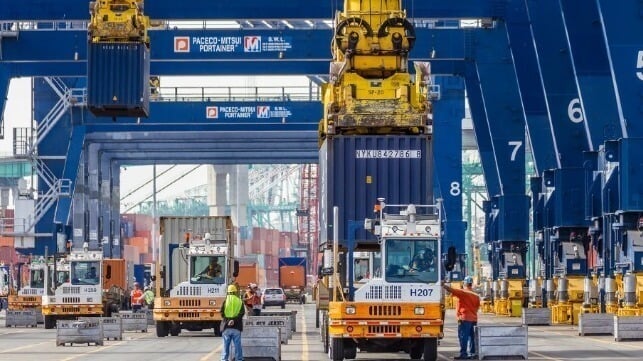Brief Surge Expected This Month for U.S. Retail Imports as Tariffs Loom

The seesaw of tariff implementation continues to cause uncertainty for businesses, with the National Retail Federation predicting that July will see a strong rebound as stores attempt to build inventory ahead of the latest date for the rollout of tariffs. The trade group raised its forecast for July and August imports based on the latest tariff delays after previously cutting its forecast based on the aggressive tariff policies. The group, however, believes imports will again trail off in the fall as the tariffs are due to go into effect.
Donald Trump announced that he had started sending out letters notifying key countries and trading partners of the tariffs that would be implemented on August 1. The NRF notes that Trump signed a new executive order delaying “reciprocal tariffs” until August 1, although Trump has frequently changed the dates in the past. NRF notes that the latest move calls for 40 percent on more than a dozen countries while noting the uncertainties on China tariffs, even though a deal was reportedly signed.
“The tariff situation remains highly fluid and retailers are working hard to stock up for the holiday season before the various tariffs that have been announced and paused actually take effect. Retailers have brought in as much merchandise as possible ahead of the reciprocal tariffs taking effect,” said Jonathan Gold, NRF Vice President for Supply Chain and Customs Policy. “Nonetheless, uncertainty over tariffs makes it increasingly difficult for retailers to plan, especially small businesses that have no capacity to absorb tariffs.”
The NRF is projecting that container imports at the major U.S. ports will rebound to 2.36 million TEU in July, nearly 11 percent ahead of its predictions made in June after the delay on Chinese tariffs was announced. It was reported that retailers would need time to fill the pipeline after the last announcement, but would rush to get goods into the U.S. ahead of the August expiration of the pause. The NRF expects imports will be up more than 14 percent month-over-month between June and July.
They further expect that the increase will continue into August with the projection in the Global Port Tracker increased 5 percent for August to a total of 2.08 million TEU. They, however, expect that import levels will fall back to the 1.7 to 1.8 million TEU range starting in September for the remainder of 2025.

that matters most
Get the latest maritime news delivered to your inbox daily.
The decline in volumes will be more dramatic, the NRF notes, this year because imports were elevated in part in late 2024 due to concerns about port strikes along the U.S. East and Gulf Coast. After the short longshoremen’s strike in October, retailers had been concerned that the ports might see a prolonged strike at the start of 2025. The union and terminal operators, however, reached an agreement to avert the second strike.
The Global Port Tracker projects that imports for the first six months of 2025 reached 12.63 million TEU. The NRF says that it is up 4.5 percent year over year. It, however, is below the original forecast of 12.78 million TEU announced before Trump rolled out the tariff policy in April.
